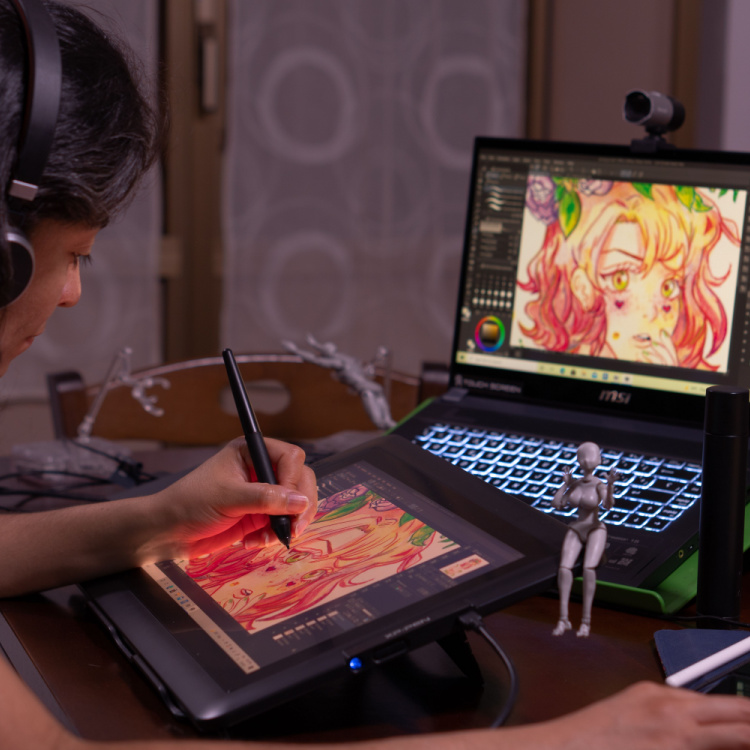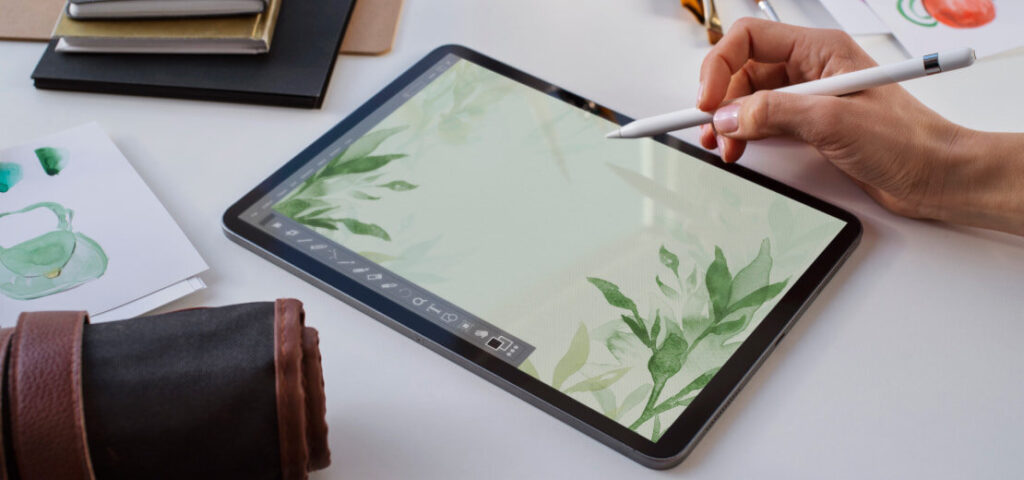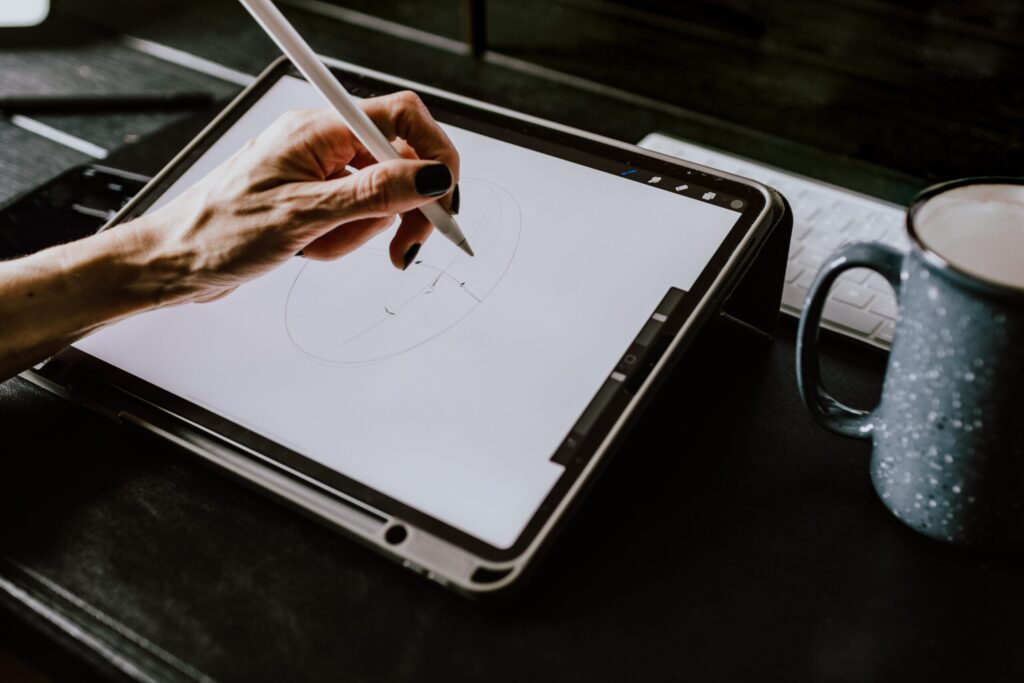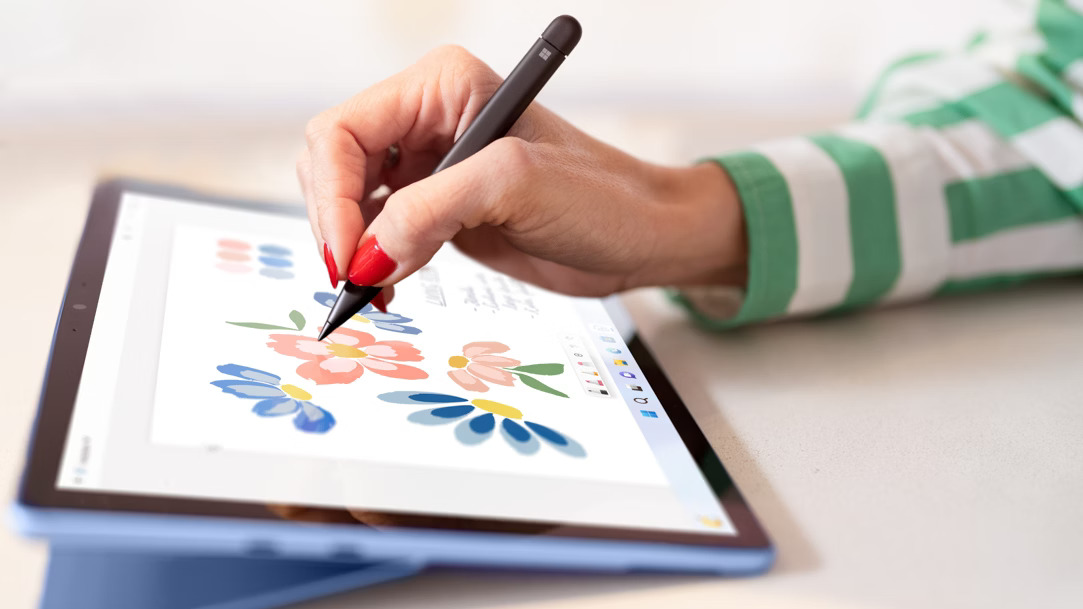Improving your digital art skills is super important. Even the pros are always learning because the creative world keeps evolving.
It’s not just about mastering new software or having fancy tools. You also need to work on your basic art skills. These are like the building blocks that help you make awesome art, no matter what tools you’re using.
If you’re looking to improve your skills in digital art, there are several tips you can take to enhance your abilities and creativity.
Whether you’re just starting out or you’ve been doing digital art for a while, there’s always something new to learn. So grab your tablet and let’s get creative!
What is Digital Art?

Digital art refers to any kind of art made using digital technology. This could be anything from photos edited on a computer to complex computer-generated graphics or even artworks created using artificial intelligence.
Just like traditional art, digital art comes in many forms and styles. What sets it apart is that it relies on digital tools and techniques for its creation.
Digital art isn’t limited to just one type of technology or style. It includes things like digital photography, computer-generated graphics, pixel art, and even more experimental forms like AI-generated art and augmented reality (AR) art.
In the end, digital art results in a digital final product. This could be anything from a digital painting to a virtual reality experience to a non-fungible token (NFT).
With technology becoming more ingrained in our lives, digital art continues to grow and expand, offering artists endless possibilities for creative expression.
How To Get Better At Digital Art?

Digital art has become super popular lately because it’s easy to get into and there are tons of cool things you can do with it.
If you’re just starting out, it might seem overwhelming with all the different software and techniques out there. But don’t worry, I’ve got some tips to help you out!
First off, you need to pick the right software. There are lots of options, so take your time to try a few and see which one feels best for you. Try out different brushes and settings to see what cool effects you can create.
Take advantage of online tutorials, courses, and workshops to familiarize yourself with advanced features and techniques.
Remember, improvement in digital art, like any skill, takes time and dedication, so be patient with yourself and keep pushing your boundaries.
Tips To Improve Your Digital Art Skills

Improving your digital art skills is a journey for everyone, whether you’re just starting out or already experienced.
Here’s a breakdown of key tips to help you level up:
- Practice Regularly: Set aside dedicated time for practice and stick to it. Start with simple exercises and gradually challenge yourself with more complex projects.
- Experiment with Different Techniques: Try out new tools, styles, and digital mediums to keep your practice fresh and engaging.
- Study Color Theory and Composition: Learn the basics of color theory and composition to make your artwork visually appealing and well-balanced.
- Seek Feedback: Join online art communities to receive constructive criticism from other artists. Also, be open to giving feedback to others—it helps you develop a critical eye.
- Take Online Courses and Tutorials: Invest in your education by enrolling in online courses and tutorials that match your skill level. Consistent learning is key to improvement.
- Attend Workshops and Events: Networking with fellow artists at workshops and events can provide valuable insights and inspiration. Don’t hesitate to ask questions and participate in activities.
- Keep Software and Equipment Updated: Stay informed about the latest digital tools and technologies, and invest in high-quality equipment to enhance your workflow.
- Develop Your Unique Style: Focus on creating art that resonates with you and reflects your personality. Experimentation and incorporating signature elements will help you stand out.
- Embrace Mistakes and Take Breaks: Don’t be afraid to make mistakes—they’re opportunities to learn and grow. Remember to take regular breaks to avoid fatigue and maintain your well-being.
- Create an Online Portfolio: Use platforms like Portfoliobox to showcase your digital artwork professionally. Customizable templates and features like galleries and SEO tools can help you attract potential clients and employers.
By following these tips and staying committed to your practice, you can elevate your digital art skills and create artwork that truly stands out.
Is Digital Art Real Art?

Yes, digital art is real art. While it might not be physical like paintings or sculptures, it still requires creativity, skill, and effort. Just like traditional art, digital art is a way for artists to express themselves and their emotions.
The tools may be different, but the talent and dedication needed are the same. So, whether it’s pixels on a screen or paint on a canvas, it’s all art.
Conclusion
Improving your digital art skills is an ongoing creative journey of exploration and growth.
It’s not just about mastering software or tools, but honing your fundamental artistic abilities while continuously pushing boundaries.
With so many online resources like tutorials and workshops, there’s always something new to learn and discover.
Embrace mistakes as opportunities to learn, and take breaks when needed to recharge.
By staying dedicated to your craft and developing your unique style, you can create digital artwork that resonates with others and stands the test of time.
Remember, whether pixels on a screen or paint on canvas, digital art is real art that requires creativity, skill, and commitment.
So keep creating, keep innovating, and let your imagination soar in the digital realm. The journey never ends as you keep exploring and growing as an artist.


Leave a Reply